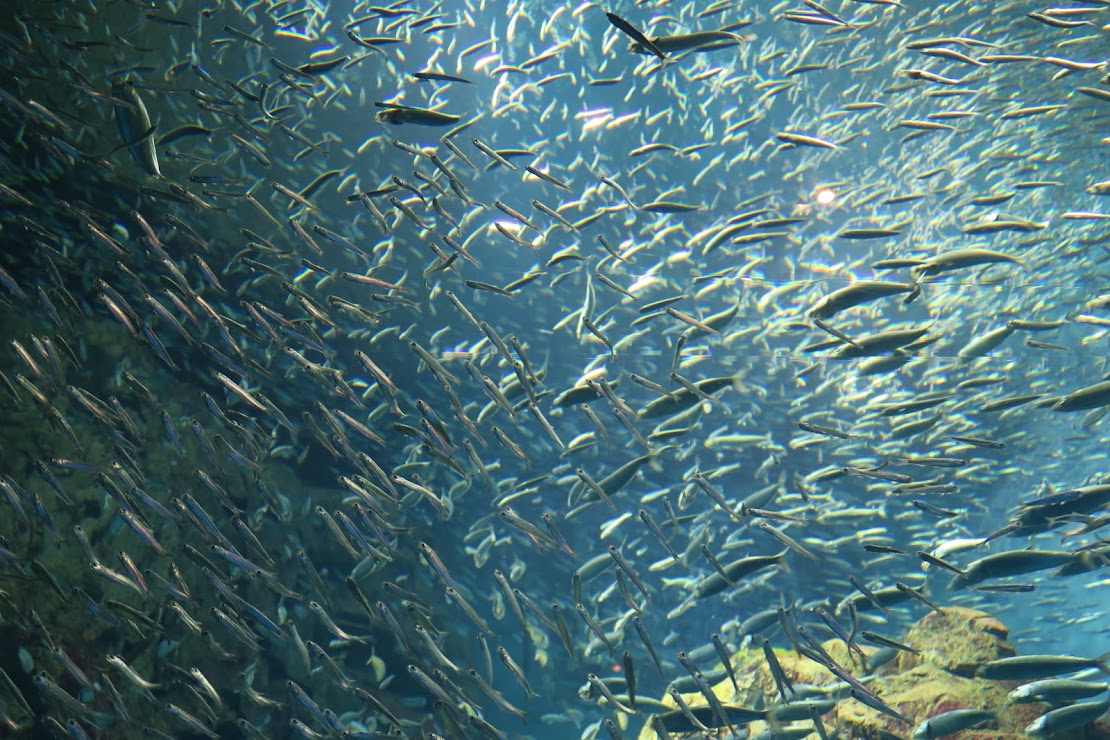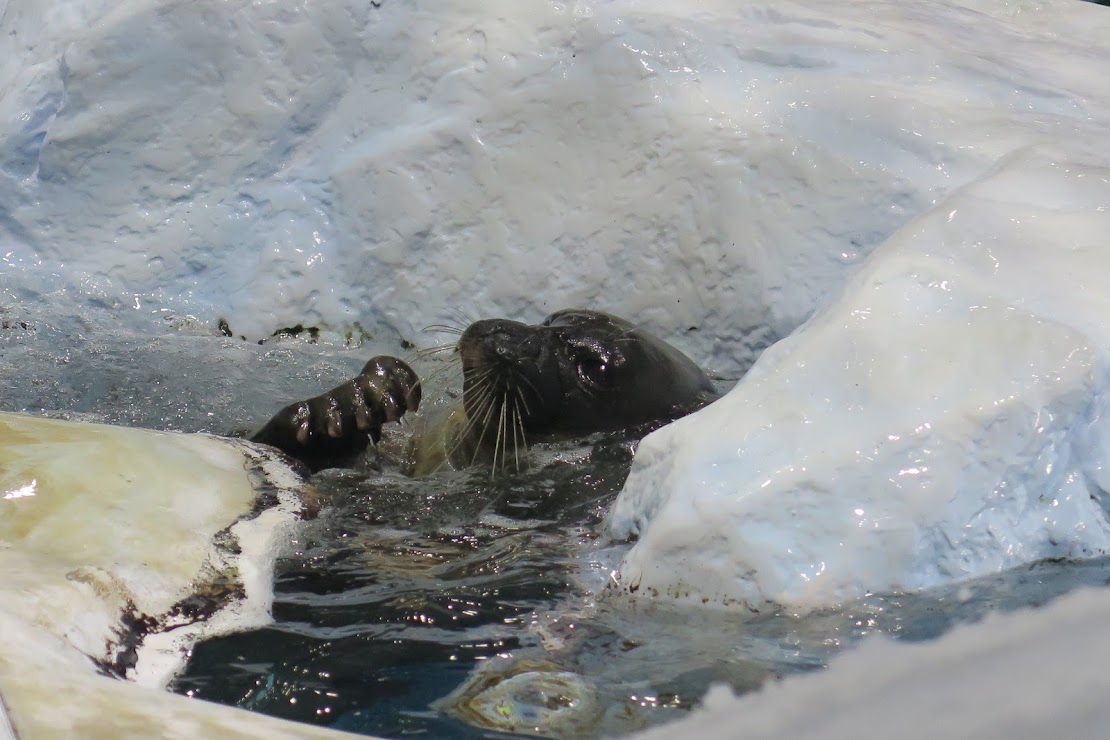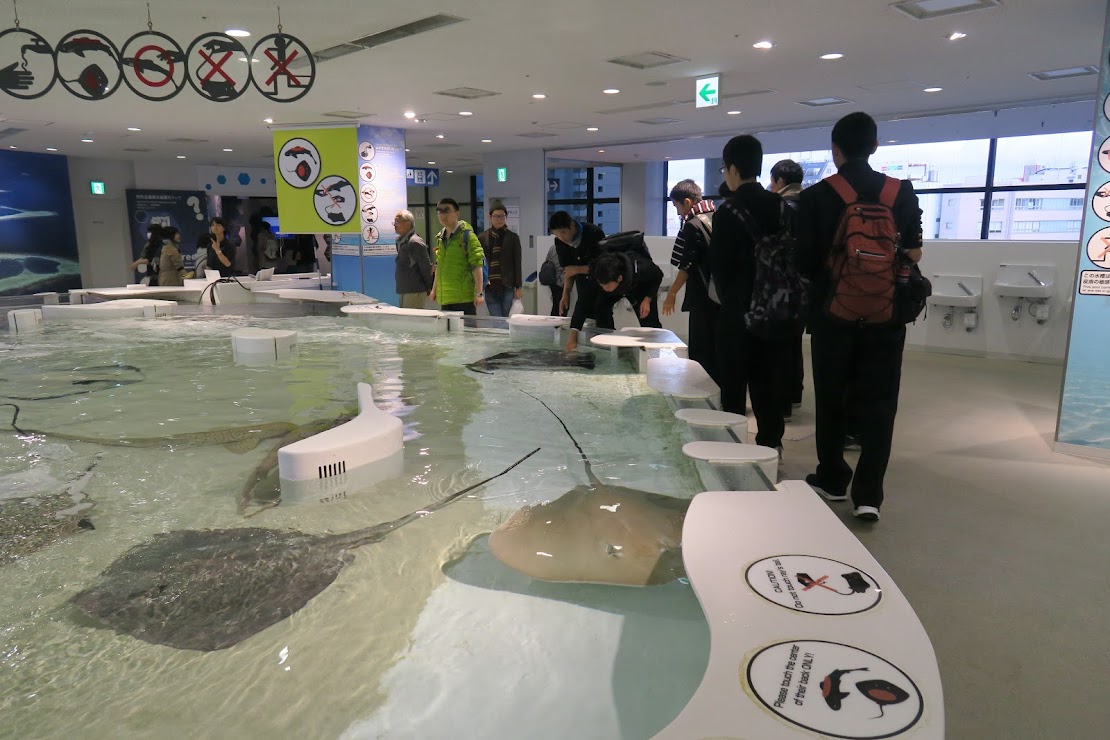29 November 2016

We had kept the last day of our trip to Japan as a “free and easy” day. Osaka Aquarium Kaiyukan was not high on my list of “must-see” places when planning my itinerary since I had already seen some of the best aquariums in the world which included the Monterey Bay Aquarium and Ocean Park in Hong Kong. Since we had already seen the best of Umeda and Namba area, we decided to spend our last day in Japan at this aquarium since it was highly rated and it houses whale sharks!
We bought the OSAKA Kaiyu Ticket which is a special one-day ticket that included entry to Osaka Aquarium Kaiyukan and unlimited rides on subway and buses within Osaka City for a day. This ticket cost 2550 Yen and is value for money since the entrance ticket to the aquarium itself costs 2300 Yen. The ticket was sold by the hotel. How convenient!
After checking out from our hotel and leaving our luggage in their safe keeping, we took the subway to the Osakako Station (Chuo Line). From there, there was a 10 to 15 minutes walk to aquarium. The aquarium is located in the Tempozan Bay area with a large Ferris Wheel that could be seen from a distance. On the way to the aquarium, we stopped by to have our breakfast at a small cat-themed cafe serving a simple breakfast but awesome siphon coffee!


Cat-themed calendars.


Ferris wheel at the Tempozan Bay area.

Tempozan Marketplace.
Although the aquarium opened at 10 AM and we arrived at about 11 AM, there was no queue outside. There were some nice photo opportunities outside the aquarium.

No queue to take a photo with a life-size model of the whale shark, one of the aquarium’s main attractions.

Selfies with a picture of a whale shark on the way into the aquarium.
We walked into the underwater tunnel ”Aqua Gate”, where we experienced the ocean all over us as if we were diving ourselves.

Then we had to make our way to the top floor with we started the tour. While taking the escalator to the top floor, I spotted a replica of the ship Santa Maria sailing by on Osaka Bay.

The ship is modelled after the ship on which Columbus journeyed to the American Continent (although the replica is twice the size of the original). The Santa Maria cruise would take visitor for a paid tour of Osaka Bay from Osaka Aquarium Kaiyukan at Tempozan Harbor Village.
Marine life in the aquarium were displayed in 15 tanks, each representing a specific region of the Pacific Rim, including the forest of Japan, Antarctica, the Great Barrier Reef and others. We slowly spiral down floor by floor around the central tank. The central tank, representing the Pacific Ocean, is nine meters deep and home to a whale shark, the aquarium's main attraction. Some of the tanks stretched over several floors, so we can get perspectives of the fishes and animals displayed within.
Here are some of my favourite exhibits and photos.

Japanese Giant salamander at the Japan Forest section – first time I had seen this critter.

We saw this species of crab in the middle of the forest while we were hiking along the Kumano Kodo Nakahechi Trail in the Kii Peninsula.

Otter exhibit in Osaka Aquarium Kaiyukan.

Ring tailed coati from the Gulf of Panama.

This cute fish is a long spine porcupine fish.

Another small but deadly fish from the Amazon, the piranhas with rows of sharp teeth. A school of piranhas on a feeding frenzy that can reduce a larger prey to skeleton in minutes.

Penguins at the Antarctica exhibit.

Pacific white-sided dolphins were so playful with a ball.

Ocean sunfish with odd shaped body.
The Ocean sunfish was in a tank with lots of squids. These odd-shaped fish don't really have a normal-looking tail.
This is a seasonal exhibit and we were lucky to be able to see the huge sunfish. Because they are difficult to keep in captivity, there were only a few other aquariums that one can see this fish, namely the Monterey Bay Aquarium in the USA and Lisbon Oceanarium in Portugal.


The school of Japanese anchovies swimming in unison, round and round a massive rock structure, against the current was really awesome to watch.

School of Japanese anchovies.

School of tiny striped catfishes.
One of the reasons why I came to this aquarium was to see the whale shark, the aquarium's main attraction. The central tank is massive, home to this gentle giant plus many other marine fish, large and small.


Awesome close-up view of the whale shark!

Despite its size, the whale shark is harmless to man. It feeds on plankton, krill and small fishes.
We spent many minutes on a bench in the lower floor of the tank, looking at the many species of sharks (Black Tips, White Tips, Hammerhead and Nurse Shark, etc.), many species of rays, giant groupers and schools of tuna, trevally and other fishes in the giant central tank. This beats diving into the ocean to get such experience. It was worth every yen of the entrance fee just to experience this.

Swimming in unison, a pair of rays at the Pacific Ocean exhibit.

This is the most dangerous creature on Earth.

Japanese Spider Crab, the biggest crab in the world.
One of my favourite exhibits was the collection of jellyfishes. I have seen similar exhibits in Hong Kong’s Ocean Park and I will never be tired of watching them swimming gracefully in the tanks.

They were amazing and also amusing to watch. Some of the most beautiful marine critters are also the most deadly as they often carry poison in the microscopic barbs along the long trailing tentacles.


I like the interactive exhibits as well where we could get personally observe, hear and touch the exhibits. Smell too. The penguins exhibit at the Falkland Island zone smell a bit although the little penguins were so cute.

On the fourth floor, the Arctic living environment is recreated using real snow and ice. It was nice watching the ringed seals playing amongst the ice in the pool.


At the “touch pool” of the Maldives zone, we could actually touch the rough sandpaper-like texture of sharks’ skin and the slimy feel of stingrays.

There was even an exhibit showing the preserved body of a Coelacanth. The Coelacanth is a truly prehistoric creature where fossilised remains that been found and thought to be extinct like the dinosaur, over 65 million years ago. Until a live fish was caught in 1938.

Coelacanth - truly prehistoric creature that stills lives in our ocean. It was called a Living Fossil because its present-day form appears unchanged from the fossilised specimens.
It was cool to get to see the Coelacanth at the Kaiyukan, even though it was not a live fish.
Overall, we enjoyed the Osaka Aquarium Kaiyukan so much that we spent about 5 hours inside. By the time we emerged, it was closed to 4.30 and we could see the sun almost setting across Osaka Bay.
For those with more time on their hands, it would be worthwhile to spent the evening at the Tempozan Marketplace and maybe have dinner at Naniwa Kuishinbo Yokocho, a food theme arcade taking the architecture and inspiration from 1955 traditional shopping and entertainment area.
As this was out last day in Osaka and we need to be at the Kansai International airport by 9.35 PM for our flight home, we went to have a quick dinner at Dotonbori (okonomiyaki dinner at the Mizuno restaurant) before returning to our hotel to pick up our luggage.
One good thing about staying at the Hotel Monterey Osaka is that there are convenient transport options to the airport. We chose to take the limousine bus from the Herbis Osaka Airport bus Stop, a 5 minute walk from the hotel. Although it costs slightly more compared to taking trains, it was more convenient and relaxing.
During the 50 minutes to the Kansai International Airport, I reflected on my day at the Osaka Aquarium Kaiyukan. A day truly well spent!






